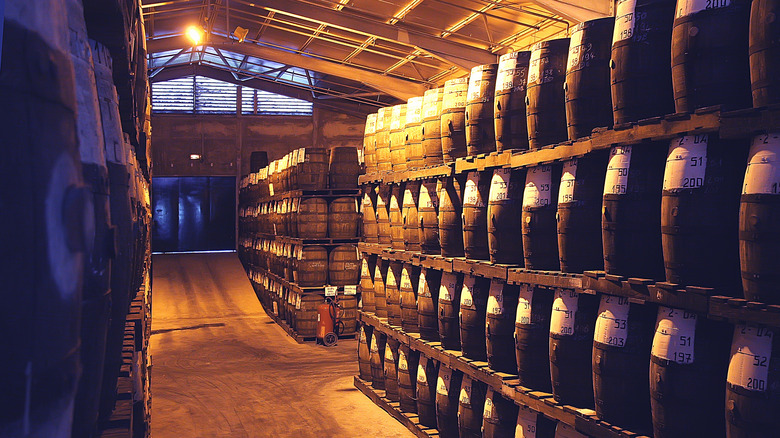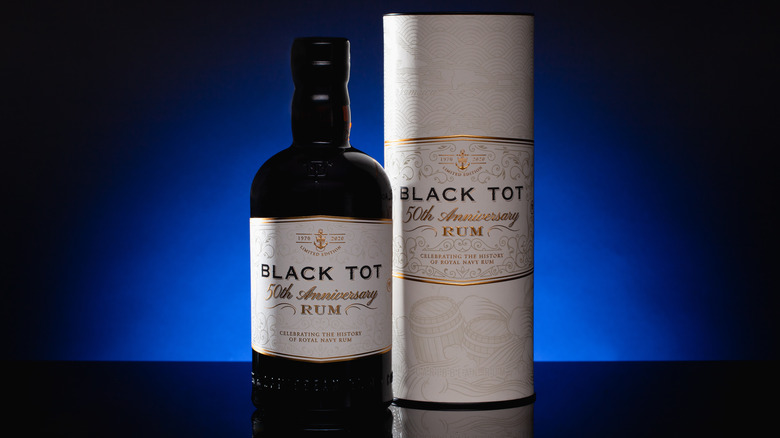The Specialty Rum That Sat Around For 40 Years Without Anyone Knowing
Having no rum was not a problem Captain Jack Sparrow would ever have encountered on a British Royal Navy ship – there was plenty of it. Water wasn't always available at sea, nor was water always safe; the tropical environment wasn't ideal for maintaining drinkable water. Beer tended to go bad, so hard alcohol was the way to go – it was cheaper and required less storage space, which was hard to find on tightly-packed naval ships, according to Forbes.
The British Royal Navy started issuing a pint of rum a day for each sailor around 1655. Half a pint was passed out twice a day at the call of "Up Spirits!" by the ship's purser. The ration became known as "Pusser's Rum," a mispronunciation of purser, per Royal Museums Greenwich. It also became known as Nelson's Blood because, as the legend goes, after his death at the Battle of Trafalgar in 1805, Admiral Horatio Nelson's body was stored in a cask of alcohol for the trip back to Britain. Sailors drilled holes into the cask and drank the liquid – Nelson's blood.
In 1740, after noticing how drunk sailors would get, an admiral decided to change the daily tot by watering it down into a proto-mojito – two parts water to one part rum, lime juice, and sugar – called grog, which was also effective in preventing scurvy. While intended to prevent drunkenness, sailors did hoard their rations and drink them in one go, hence the word "groggy," per Pusser's Rum.
You can own a piece of British naval history -- for a price
The daily tot lasted 300 years – all the way through colonialism in the Caribbean, the American Revolution, and two world wars. The tradition ended on July 31, 1970, when it was decided that naval ships and their new advanced machinery and complex systems were best operated whilst sober. The last day of rum rations became known as "Black Tot Day," per Forbes. But, the final tots passed out were not the last of the rum. Emptied from oak casks into stone flagons, the rum was housed in a warehouse for almost 40 years, only occasionally opened for special events, but mostly left alone.
That is until Speciality Drinks acquired the rum in time for the 40th anniversary of Black Tot Day in 2010. They blended the rums from all the flagons and made 6,000 bottles of Black Tot Rum. If you have £850, or around $1,000, you can buy yourself a bottle of the rare rum and own a piece of British naval history, according to Atlas Obscura.
Rum reviewer Josh Miller was able to have a taste of the rarity and described the sip as having notes of blackstrap molasses and smoke up front, then fruity and "a very odd undertone that is reminiscent of soy sauce." He concludes that it's a fascinating piece of naval and rum history and encourages rum connoisseurs to try it but recommends sipping and enjoying a more common rum.

